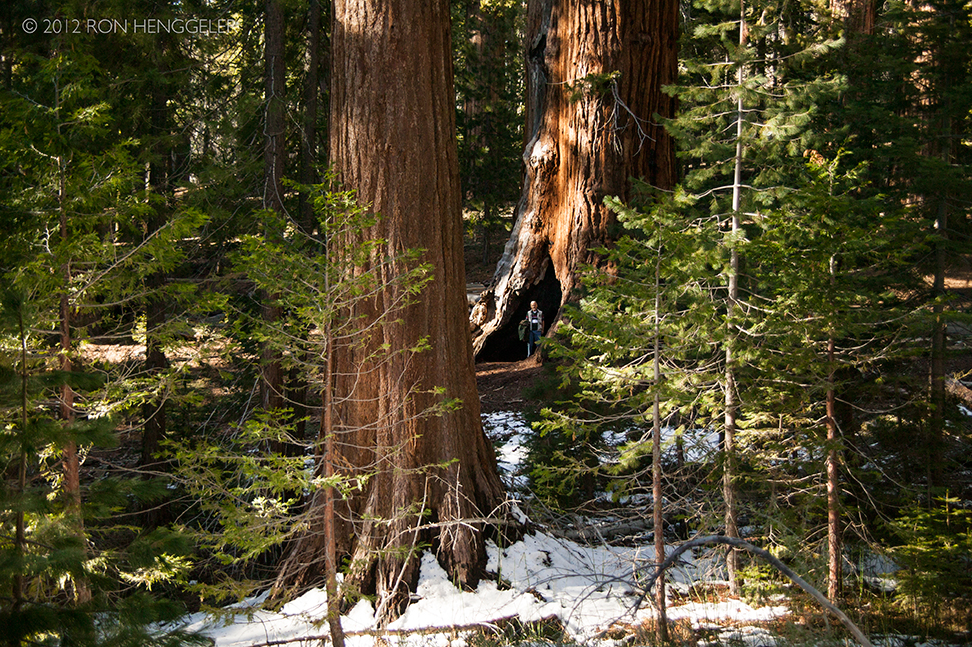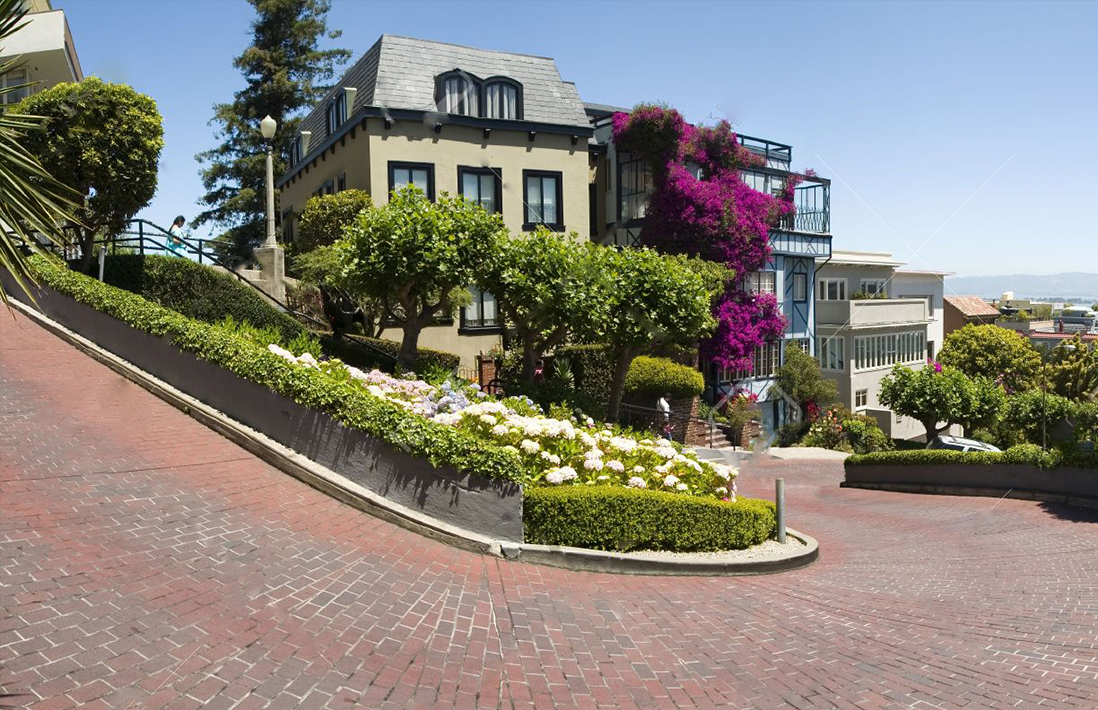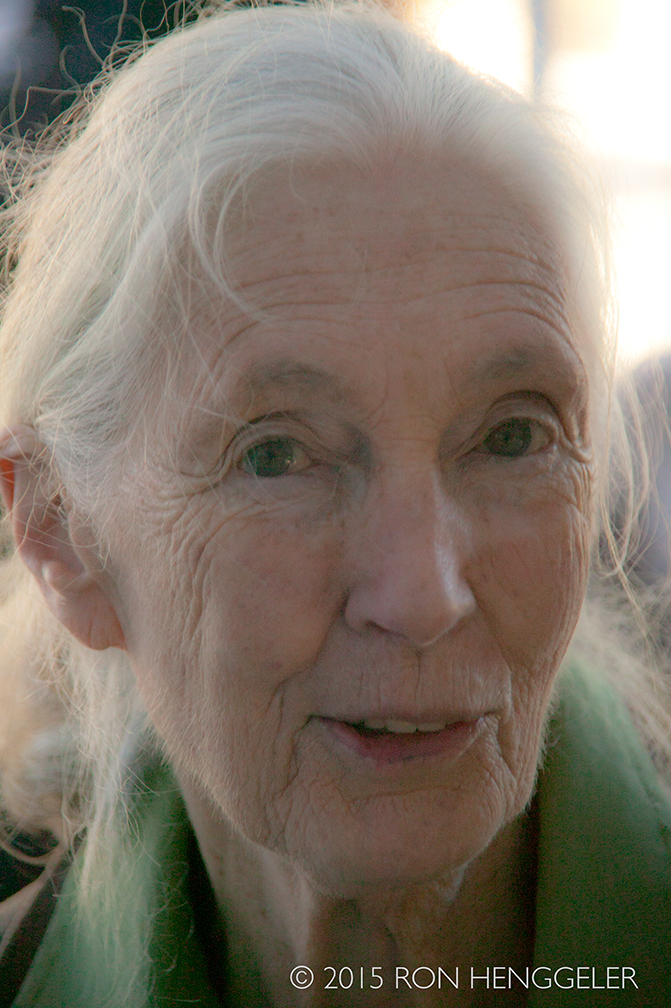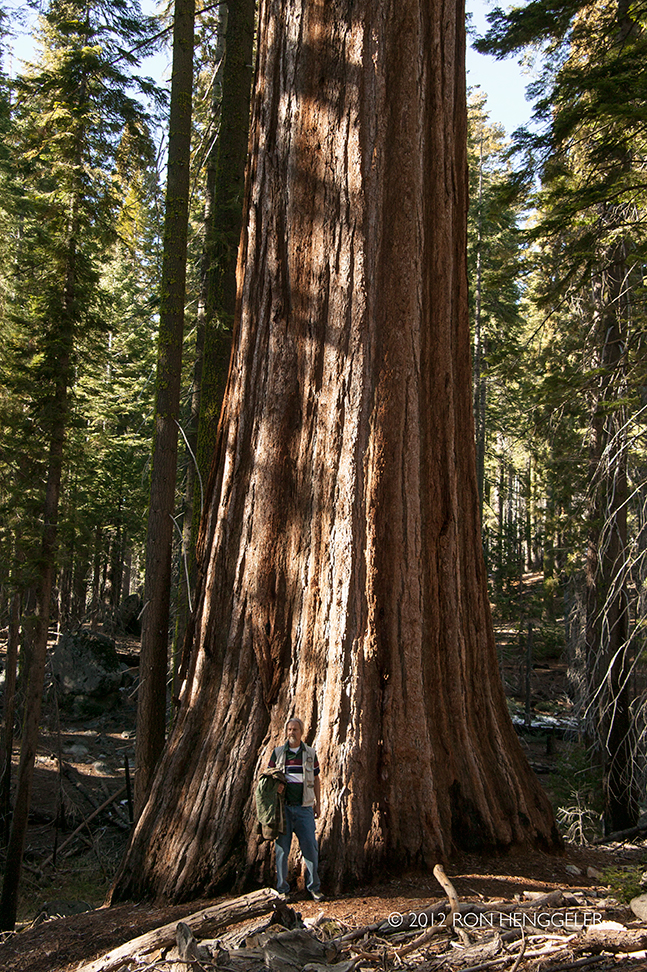RON HENGGELER |
March 28, 2017
A brief history of the majestic sequoia sempervirens, and the ongoing battle to save a redwood tree in San Francisco
On Friday March 24th, San Francisco’s Urban Forestry Council voted unanimously to confer landmark status on an 85-foot redwood tree.
The drawn out and contentious battle is not over yet. The San Francisco Board of Supervisors gets the final say on giving it the landmark status.
Here are some random collected points about California's coastal redwood tree, and the story of Mrs. Jaye's tree on Russian Hill.
HERE AND ONLY HERE
|
A redwood tree in Armstrong WoodsThe serene, majestic beauty of this Grove is a living reminder of the magnificent primeval redwood forest that covered much of this area before logging operations began during the 19th century. Armstrong Redwoods preserves stately and magnificent Sequoia sempervirens, commonly known as the coast redwood. These trees stand together as a testament to the wonders of the natural world. The grove offers solace from the hustle and bustle of daily life, offering the onlooker great inspiration and a place for quiet reflection.http://www.parks.ca.gov/?page_id=450 |
Cathedral Grove in Muir WoodsSTURDY SURVIVORS
|
Mrs. Jaye lives in San Francisco near the top of Lombard Street on Russian Hill. |
54 years ago she planted a redwood tree in honor and in memory of her husband and two young boys who had recently died in a airplane crash.A few of Mrs. Jaye's influential neighbors who live across from her, have formed a coalition, and are hoping to one day cut down the tree to improve their views as soon as Mrs. Jaye is gone, insisting that the tree is hazardous.The tree has been evaluated by 10 Urban Forestry Council members, 1 staff member and a Certified Arborist. All these reports show that the tree is vigorously healthy, just entering the prime of its life, and is NOT a hazard.These written reports can be found at: HelpLandmarkThisRedwood.com in the “Evaluations, Reports, History” tab. |
The pathway in the backyard where the redwood lives. |
The tree is now 85-foot tall, and is 24 ft round at the base. Mrs. Jaye chose a redwood to remind her of Muir Woods, where she and her husband got engaged. Friday’s meeting at City Hall was the third time Urban Forestry Council considered Jaye’s sequoia for San Francisco’s tree landmark program. |
On Friday March 24th, the San Francisco’s Urban Forestry Council voted unanimously to confer landmark status on an 85-foot redwood tree. Unfortunately, the battle is not over yet. This decision was a well deserved victory, but a final ruling now rests in the hands of the San Francisco Board of Supervisors. |
Here is the link to tree's Facebook page:
|
A close-up of the bark on the trunk at the base of Meri Jaye's redwood tree |
TALLEST TREES ON EARTH
|
|
San Francisco’s Urban Forestry Council voted unanimously last Friday to confer landmark status on an 85-foot redwood in a Russian Hill homeowner’s backyard.Believe it or not, this was a watershed vote in a long and highly contentious neighborhood fight. But the battle isn’t over yet.http://sf.curbed.com/2017/3/27/15076152/russian-hill-redwood-landmark |
Just down the block from Mrs. Jaye's home is another ever larger redwood tree. |
ANCIENT OLD-GROWTH – AND ASPIRING YOUNGSTERS
|
The tree is full or part-time home to numerous species of birds including: Mourning Dove, American Crow, American Robin, Orange-crowned Warbler, Anna’s Hummingbird , Western Scrub Jay, Hermit Thrush, Dark-eyed Junco, Downy Woodpecker, Chestnut-backed Chickadee, Townsend’s Warbler, White-crowned Sparrow, Northern Flicker, Pygmy Nuthatch Yellow-rumped warbler & Lesser Goldfinch |
An email provided by Mrs. Jaye’s attorney, Matthew Gluck, to the Forestry Council raised concern that Jaye, an elderly woman, was allegedly taken advantage of by a neighbor.
|
The tree and Mrs. Jaye had a special visit by Chief Miller of the Lacota Tribe in 2013, chanting blessings "to protect this tree always". |
|
Mrs. Jaye planted this tree in 1962 as a memorial to late husband and 2 children, tragically lost in a plane accident.The tree has a "sister" tree in Japan planted a couple years after this one. |
Any fool can destroy trees. They cannot run away; and if they could, they would still be destroyed, — chased and hunted down as long as fun or a dollar could be got out of their bark hides, branching horns, or magnificent bole backbones.... Through all the wonderful, eventful centuries since Christ’s time — and long before that — God has cared for these trees, saved them from drought, disease, avalanches, and a thousand straining, leveling tempests and floods; but he cannot save them from fools, — only Uncle Sam can do that. ~John Muir, “The American Forests,” August 1897 |
Big Basin State ParkThe Origin of Conservation in the Santa Cruz Mountains
|
Samuel P. Taylor State ParkLocated in a redwood-filled gorge a short drive west of Marin County's suburbs, Samuel P. Taylor State Park is a popular recreation area for local residents. The park offers a day use (picnic) area and camping, plus the wide and level Cross Marin Trail, which makes for easy cycling under second-growth redwoods. More challenging trails climb the grassy hilltops around the valley and offer nice views of the Marin countryside.http://www.redwoodhikes.com/Taylor/Taylor.html |
In 2006 the City of San Francisco had the tremendous foresight to create a Landmark Tree Program to “identify and preserve the City’s most important trees”.On March 24, 2017 the SF Urban Forestry Council VOTED UNANIMOUSLY to support the nomination to landmark this spectacular tree.
|
Gigantic second and third growth trees are found in the redwoods, forming magnificent temple-like circles around charred ruins more than a thousand years old.John Muir, “The American Forests,” August 1897 |
Muir Woods |
Not a redwood, but a sequoia, in Mariposa Grove in Yosemite National Parkhttps://www.savetheredwoods.org/park/yosemite-national-park/?gclid=CMjN_tra-dICFQJsfgod0MsLnA |
Muir WoodsStanding at the base of Earth’s tallest tree, the coast redwood, is one of life’s most humbling and amazing experiences. These California trees can reach higher than a 30-floor skyscraper (more than 320 feet), so high that the tops are out of sight.Their trunks can grow more than 27 feet wide, about eight paces by an average adult person! Even more incredible: These trees can live for more than 2,000 years. Some coast redwoods living today were alive during the time of the Roman Empire.https://www.savetheredwoods.org/redwoods/coast-redwoods/ |
|
Mrs. Meri Jaye and friends during the hearing at City Hall on March 24th, the day San Francisco’s Urban Forestry Council voted unanimously to confer landmark status on an 85-foot redwood tree. But the battle is not over. |
Mrs. Meri Jaye speaking at the hearing at City Hall on March 24th. |
|
The RedwoodsWritten in 1932 by Joseph P. Strauss, Chief Engineer, Golden Gate Bridge and Highway DistrictHere, sown by the Creator's hand.
|
Redwoods once grew throughout the Northern Hemisphere. The first redwood fossils date back more than 200 million years to the Jurassic period. Before commercial logging and clearing began in the 1850s, coast redwoods naturally occurred in an estimated 2 million acres (the size of three Rhode Islands) along California’s coast from south of Big Sur to just over the Oregon border. When gold was discovered in 1849, hundreds of thousands of people came to California, and redwoods were logged extensively to satisfy the explosive demand for lumber and resources. Today, only 5 percent of the original old-growth coast redwood forest remains, along a 450-mile coastal strip. Most of the coast redwood forest is now young. The largest surviving stands of ancient coast redwoods are found in Humboldt Redwoods State Park, Redwood National and State Parks and Big Basin Redwoods State Park.The native people of California did not typically cut down coast redwoods, but used fallen trees to make planks for houses and hollowed out logs for canoes. The natives also regularly used common redwood forest plants. Read more about uses of redwood forest plants through our Redwood Forest Plant Guide. |
The hearing at City Hall on March 24th, on the day San Francisco’s Urban Forestry Council voted unanimously to confer landmark status on an 85-foot redwood tree. But the battle is not over. |
An email provided by Mrs. Jaye’s attorney, Matthew Gluck, to the Forestry Council raised concern that Jaye, an elderly woman, was allegedly taken advantage of by a neighbor.
|
The moment on March 24th when San Francisco’s Urban Forestry Council voted unanimously to confer landmark status on an 85-foot redwood tree. But the battle is not over.Please contact Supervisor Farrell requesting him to sponsor the nomination of the redwood tree at 4 Montclair Terrace for landmark status. I (we) look forward to having your support for this wonderful project.Supervisor Mark FarrellCity Hall1 Dr. Carlton B. Goodlett Place, Room 244San Francisco, Ca 94102-4689(415) 554-7752 - voice(415) 554-7843 - faxMark.Farrell@sfgov.orgKanishka Karunaratne, Legislative Aide at Kanishka.Karunaratne@sfgov.orgJess Montejano, Legislative Aide at Jess.Montejano@sfgov.org |
Cathedral Grove in Muir WoodsFor more of my photos at Muir Woods, go to:http://www.ronhenggeler.com/San%20Francisco/Mount%20Tamalpais/MtTamIndex3.htm |
Trees are crucial to maintaining a stable human-friendly climate. Studies show that coast redwoods capture more carbon dioxide (CO2) from our cars, trucks and power plants than any other tree on Earth. And, as the climate changes, the redwood forests in the Santa Cruz Mountains are one of very few places that can provide a refuge for plants and animals here to survive, because the area has many microclimates, is cooled by coastal summertime fog and is still largely unpaved.https://sempervirens.org/discover-redwoods/facts-history/?gclid=COjkru729tICFQiDfgodRRgNcQ |
The moment on March 24th when San Francisco’s Urban Forestry Council voted unanimously to confer landmark status on an 85-foot redwood tree. But the battle is not over.Please contact Supervisor Farrell requesting him to sponsor the nomination of the redwood tree at 4 Montclair Terrace for landmark status. I (we) look forward to having your support for this wonderful project. |
Mrs. Meri Jaye leaving the hearing room after the Urban Forestry Council voted unanimously to confer landmark status on her 85-foot redwood tree.But the battle is not over. |
3.23.17 ABC Channel 7 Newshttp://abc7news.com/society/sf-residents-at-odds-over-massive-redwood-tree/1815939/ |
|
Muir Woods |
The list of other landmarked trees in San Franciscohttps://sfenvironment.org/article/list-of-landmarked-trees |
|
54 years ago she planted the redwood tree in honor and in memory of her husband and two young boys who had recently died in a airplane crash.A few of Mrs. Jaye's influential neighbors who live across from her, have formed a coalition, and are hoping to one day cut down the tree to improve their views as soon as Mrs. Jaye is gone, insisting that the tree is hazardous.The tree has been evaluated by 10 Urban Forestry Council members, 1 staff member and a Certified Arborist. All these reports show that the tree is vigorously healthy, just entering the prime of its life, and is NOT a hazard.These written reports can be found at: HelpLandmarkThisRedwood.com in the “Evaluations, Reports, History” tab. |
The redwood is one of the few conifers that sprout from the stump and roots, and it declares itself willing to begin immediately to repair the damage of the lumberman and also that of the forest-burner. ~John Muir, “The American Forests,” August 1897 |
Not redwoods, but sequoias, in Mariposa Grove in Yosemite National Park |
Mrs. Jaye and her supporters at City Hall after the hearing on January 27, 2017For more information:http://www.ronhenggeler.com/Newsletters/2017/1.27/Newsletter.html |
AS OLD AS THE DINOSAURS — ALMOST
|
Muir WoodsOnly a few miles north of San Francisco, in a isolated canyon, grows the ancient coast redwood forest known the world over as Muir Woods. The park offers solitude, interpretive displays and programs, and numerous hiking trails. Come stroll through 1,000 year old giant trees towering 260 feet high and find out why famed naturalist John Muir called this… “…the best tree-lovers monument that could possibly be found in all the forests of the world.”http://www.visitmuirwoods.com |
Mrs. Jaye's redwood tree on Montclair at Lombard |
A view of the tree from the first curve on Lombardhttp://sf.curbed.com/2017/3/3/14806454/redwood-tree-landmark-san-francisco-lombard |
The view beyond Mrs. Jaye's rooftop as seen from the top of Lombard Street at Hyde |
Mrs. Jaye's weathervane |
Mrs. Jaye at her office desk |
|
|
|
SEE 2,000-YEAR-OLD REDWOODS HERE
|
Last Friday I wrote to Dr. Jane Goodall telling her about the unaminous vote by the San Francisco’s Urban Forestry Council to confer landmark status on Mrs. Jaye's redwood tree. She wrote back:Dear Ron,
|
John Muir (lright) with John Burroughs
|
Not a redwood, but a sequoia, in Mariposa Grove in Yosemite National Park |
As a wilderness explorer, he is renowned for his exciting adventures in California's Sierra Nevada, among Alaska's glaciers, and world wide travels in search of nature's beauty. As a writer, he taught the people of his time and ours the importance of experiencing and protecting our natural heritage. His writings contributed greatly to the creation of Yosemite, Sequoia, Mount Rainier, Petrified Forest, and Grand Canyon National Parks. Dozens of places are named after John Muir, including the Muir Woods National Monument, the John Muir Trail, Muir College (UCSD), and many schools.http://vault.sierraclub.org/john_muir_exhibit/about/ |
Not a redwood, but a sequoia, in Mariposa Grove in Yosemite National Park |
AS OLD AS THE DINOSAURS — ALMOST
|
Muir WoodsThe redwood is the glory of the Coast Range. It extends along the western slope, in a nearly continuous belt about ten miles wide, from beyond the Oregon boundary to the south of Santa Cruz, a distance of nearly four hundred miles, and in massive, sustained grandeur and closeness of growth surpasses all the other timber woods of the world.John Muir
|
|
The words and deeds of John Muir helped inspire President Theodore Roosevelt's innovative conservation programs, including establishing the first National Monuments by Presidential Proclamation, and Yosemite National Park by congressional action. In 1892, John Muir and other supporters formed the Sierra Club "to make the mountains glad." John Muir was the Club's first president, an office he held until his death in 1914. Muir's Sierra Club has gone on to help establish a series of new National Parks and a National Wilderness Preservation System. |
A noon performance at City Hall on the day San Francisco’s Urban Forestry Council voted unanimously to confer landmark status on Mrs. Jaye's 85-foot redwood tree. |
Mrs. Jaye leaving San Francisco City Hall on March 24th, the day San Francisco’s Urban Forestry Council voted unanimously to confer landmark status on an 85-foot redwood tree. |
Redwoods in Butano State Park, A Serene Forest Off Highway 1
|
John Muir (1838-1914) was America's most famous and influential naturalist and conservationist, and founder of the Sierra Club. |
A snapshot of the endless stream of thousands of cars that roll down Lombard Street every day of the year. |
The SF Urban Forestry Council VOTED UNANIMOUSLY to support the nomination to landmark this spectacular tree. This follows a unanimous vote of support by the Landmark Tree Committee on October 6, 2016.
|
Mrs. Jaye in her garden, home to a redwood tree on Russian HillHelpLandmarkThisRedwood.comFight on!!!“This beautiful, strong tree is a symbol of survival...just like it's matriarch Mérí Jaye and the City she so dearly loves.Too many San Francisco landmarks that make up the tapestry of this City's unique character have been destroyed by people who don't value what this City is about. Meri Jaye and this tree are treasures and pose no threat to the neighborhood. They only enhance this wonderful tapestry of our unique City By The Bay. Fight onMeri Jaye! Fight on you great, strong, beautiful SanFrancisco lady!You are and have always been an inspiration to me. We love and support you and this beautiful tree.”
|
Newsletters Index: 2017, 2016, 2015, 2014, 2013, 2012, 2011, 2010, 2009, 2008, 2007, 2006
Photography Index | Graphics Index | History Index
Home | Gallery | About Me | Links | Contact
© 2017 All rights reserved
The images are not in the public domain. They are the sole property of the
artist and may not be reproduced on the Internet, sold, altered, enhanced,
modified by artificial, digital or computer imaging or in any other form
without the express written permission of the artist. Non-watermarked copies of photographs on this site can be purchased by contacting Ron.































































